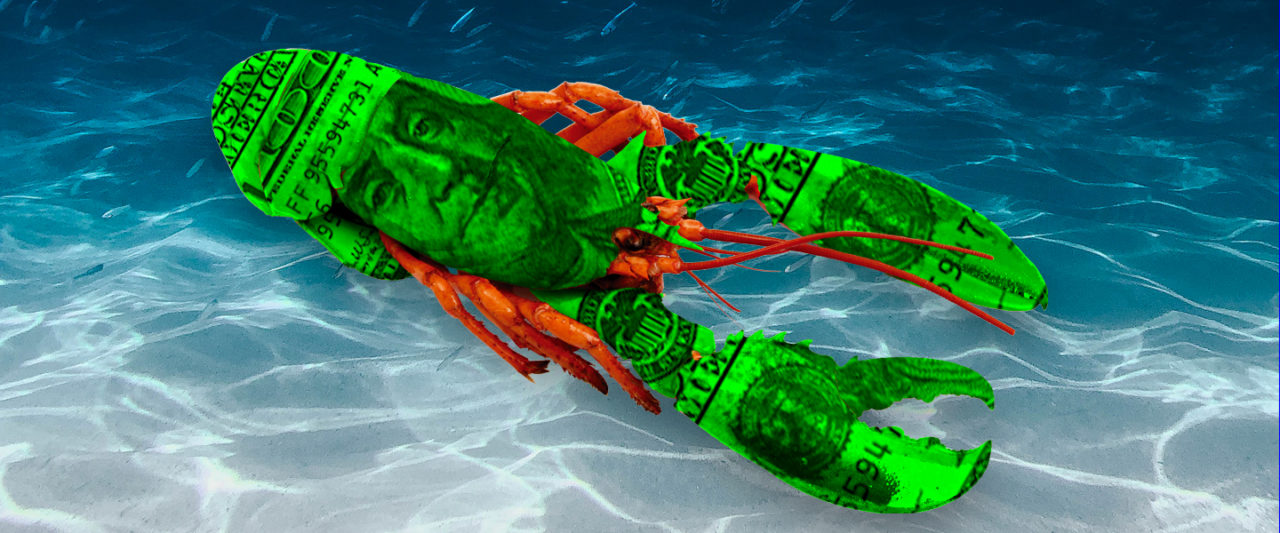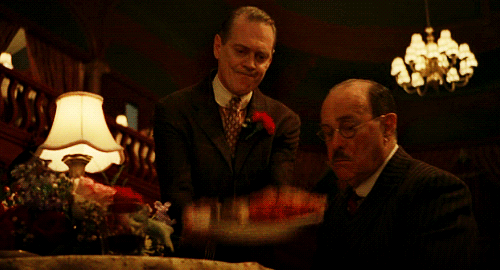
WHY IS LOBSTER SO FREAKING EXPENSIVE?
With lobster, nothing is easy, or efficient
Mmmm, lobster. They sure are ugly, but man, they sure are delicious! That’s something we can pretty much all agree on. It’s long been a luxury good, but right now it seems to be as popular as ever: You can find lobster rolls pretty much anywhere thanks to the diaspora of New Englanders who never stop moving out West or South. And of course, lobster itself is a quintessentially decadent fine-dining dish.

But however you eat it, it’ll cost you! Why is this? What is it about this crustacean at the bottom of the Atlantic that has always demanded a giant price tag? Alongside Marianne LaCroix, executive director of the Maine Lobster Marketing Collaborative, we cracked open some answers.
COME ON, THEN — WHY IS LOBSTER SO EXPENSIVE?
There are lots of reasons, so let’s start at the top. Lobster is a completely wild fishery. There are no lobster farms — it’s pretty much impossible. LaCroix cites several reasons why: For one thing, they take seven years to grow to market size, which is an eternity in commercial fishing. Secondly, they have a pretty big range; you can’t pack them in tight like a fish farm. One season they’ll be within three miles of shore; another season they’ll be 20 to 30 miles offshore. The result is that they’re all fished for by lobstermen who go out and come in every single day.
SOUNDS LIKE A LOT OF WORK.
It is, and in Maine, there are some inefficiencies deliberately baked into the industry in order to conserve the species — or rather, the resource. Every lobsterman has to own and operate their own boat, hold their own permit and be on the boat (in order to prevent conglomerates); there are minimum and maximum size limits; and the ones that are caught and have a lot of eggs aren’t only thrown back, but tagged by carving a little notch in their fin — this makes them illegal to catch. In fact, if you want to catch lobsters in Maine, there’s a waiting list for lobster-fishing permits.
Other lobster fisheries out of state have seen collapses, so Maine’s measures seem to be working for now. (But of course any sort of economic inefficiency, even well intentioned, will affect the price.)
HOW MANY OF THE LOBSTERS WE EAT HERE ARE FROM MAINE, THEN?
An overwhelming amount! La Croix says 83 percent of all lobster in the U.S. comes from Maine. The rest is mostly from New Hampshire, Massachusetts and Canada.
Bear in mind, though, that this is for one particular species of lobster: Homarus americanus — the kind we all know, with the ginormous claws. There’s of course a whole other ocean on the other side of the country, but the Pacific is home to a different lobster: the spiny lobster, which doesn’t have claws at all. It’s fished for, but on a far smaller scale, and nearly all of it is exported to Asia. (Spiny lobster is also found in Florida.) This species is probably most popular in Baja, Mexico, as well as pockets of California.
THEY’VE GOTTA STAY ALIVE AFTER THEY’RE CAUGHT, RIGHT? THAT SEEMS LIKE AN EXPENSIVE PROSPECT.
Yes, it’s one hell of a process if it’s being sent across the country. When they’re shipped, they don’t need to actually be underwater, but they do need to be kept cold and moist, LaCroix says. That’s done with ice packs or gel packs, and they’re usually wrapped in wet newspaper or seaweed, then put in boxes with dividers, a bit like how cases of wine are packaged. From Maine, they’re driven about as far as New York, but beyond that, they’re flown. Shipping one lobster alone could cost $40! Fortunately, they’re shipped in bulk.
As you might imagine, a small amount of lobsters will inevitably die along the way — this is referred to as “shrink” in the industry, and, as with any sort of distribution business, this loss is built into pricing.
WELL THAT’S DEPRESSING. WHY DO THEY HAVE TO BE ALIVE, ANYWAY?
Because it tastes better that way. It’s not only rubbery when it’s cooked dead — dead lobsters spoil quickly, attracting a lot of bacteria, and so, it’s a potential public health issue. Those live tanks at markets and restaurants aren’t just for show — they’re pretty much essential.

Keep in mind, though, not all caught lobsters are destined for a tank in a supermarket or restaurant. What usually happens is, when the lobster boat comes into the wharf, a buyer or wholesaler purchases the lobster by the pound, then aggregates some (the stronger lobsters) to a seafood distributor, who then sells them onto supermarkets or restaurants, where, upon arrival, they’ll go back into tanks. Naturally, cost is added at each step along the way, though LaCroix says margins are pretty thin for each layer.
The other lobsters go to a processing plant that’ll cook it, pick the meat out (claws and knuckles, or the coveted tails, which are also sometimes packaged raw), and flash-freeze it using liquid nitrogen. This is sold to consumers and commercially — it’s also how some lobster roll restaurants get their meat, to save them the trouble (and cost) of buying live lobsters, cooking them and breaking them down.
WAS LOBSTER ALWAYS EXPENSIVE?
Hardly! Native Americans once used them as fertilizer, and pilgrims and colonists considered them a poor man’s food. Lobsters were so abundant that they’d literally wash ashore in piles.
They initially gained status during the Gilded Age in New York City and Boston, and it’s remained that way since then, as lobster is a staple on the menu pretty much anywhere that still has white tablecloths, a consistent symbol of upwardly mobile consumption.

ANY OTHER REASON IT’S SO EXPENSIVE? AND IS LOBSTER WORTH THE PRICE?
Because people actually want to pay a lot for lobster! One study revealed that cheap lobster makes people think it’s inferior or even dangerous to eat. And secondly, people want to pay a lot for it because it’s a luxury good! As the New Yorker pointed out a while back, high prices are part of lobster’s image, “and, as with many luxury goods, expense is closely linked with enjoyment. Studies have shown that people prefer inexpensive wines in blind taste tests, but that they actually get more pleasure from drinking wine they are told is expensive. If lobster were priced like chicken, we might enjoy it less.”
There’s another element at play, too: Every restaurant knows that when you add something expensive to a menu (or a top-end item to a brand’s product lineup) it makes everything else look more reasonable by comparison. Thus, lobster isn’t only something people are glad to pay for — it makes the prices on the rest of the menu more appealing. That’s why the price of lobster remains high even when the price per pound that fishermen sell it for falls to very low levels.
So there it is! It’s somewhat economically inefficient (by design) to catch; it’s complicated (and thus expensive) to transport; it plays an important role on a restaurant’s menu; and ultimately, the consumer expects to pay a lot for it.
But if you like lobster, you’ll gladly pay the price.
Adam Elder is a writer in San Diego. He hates author bios, so this is all you get.
No comments:
Post a Comment